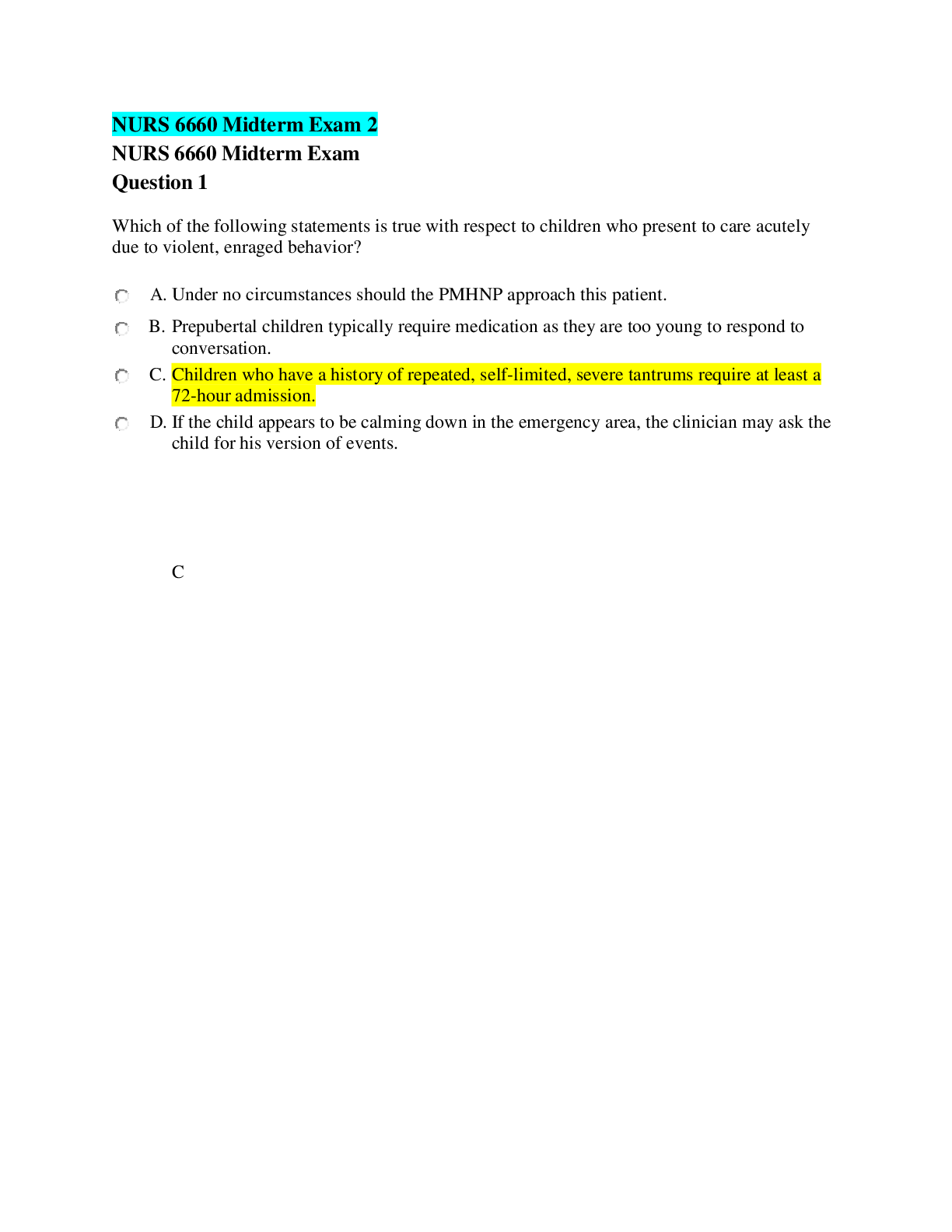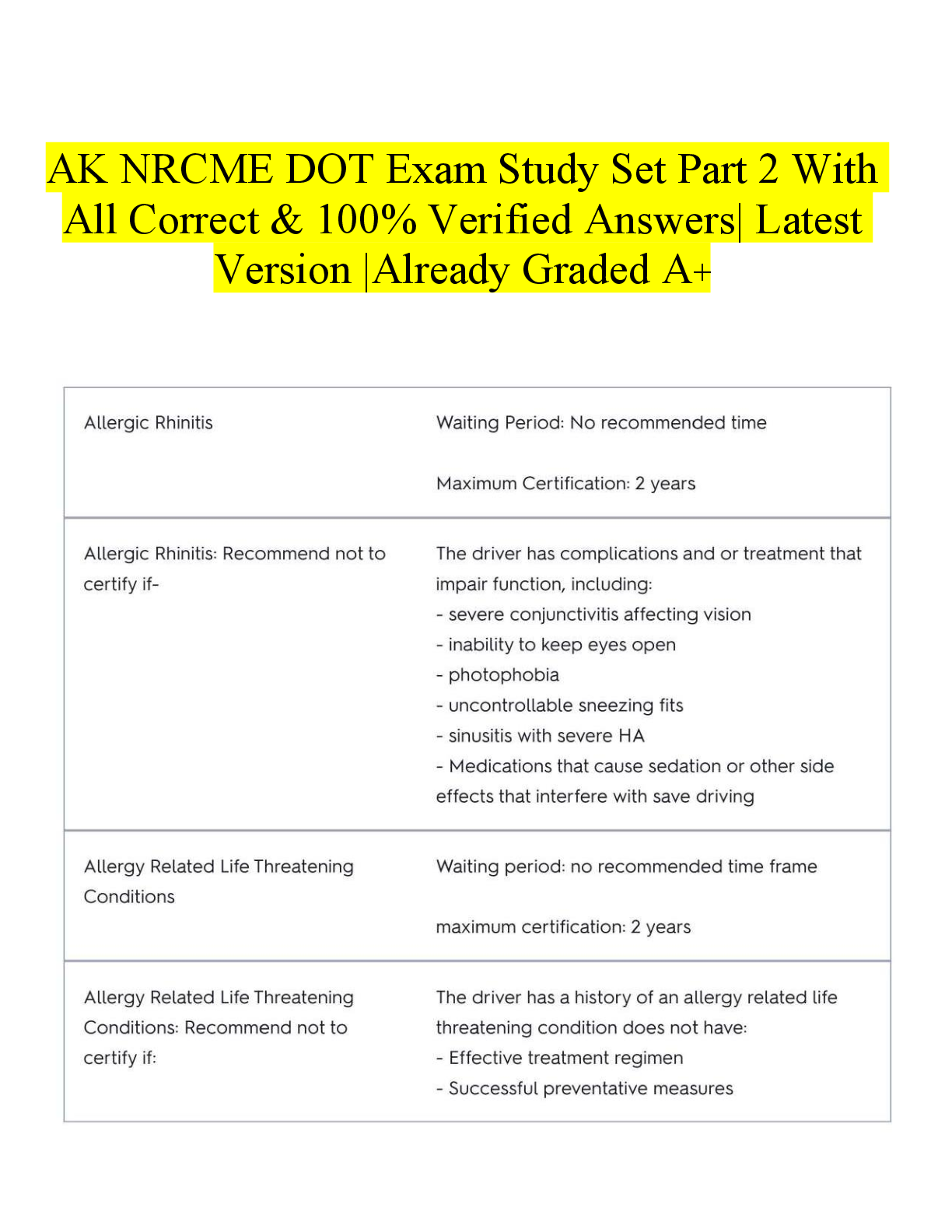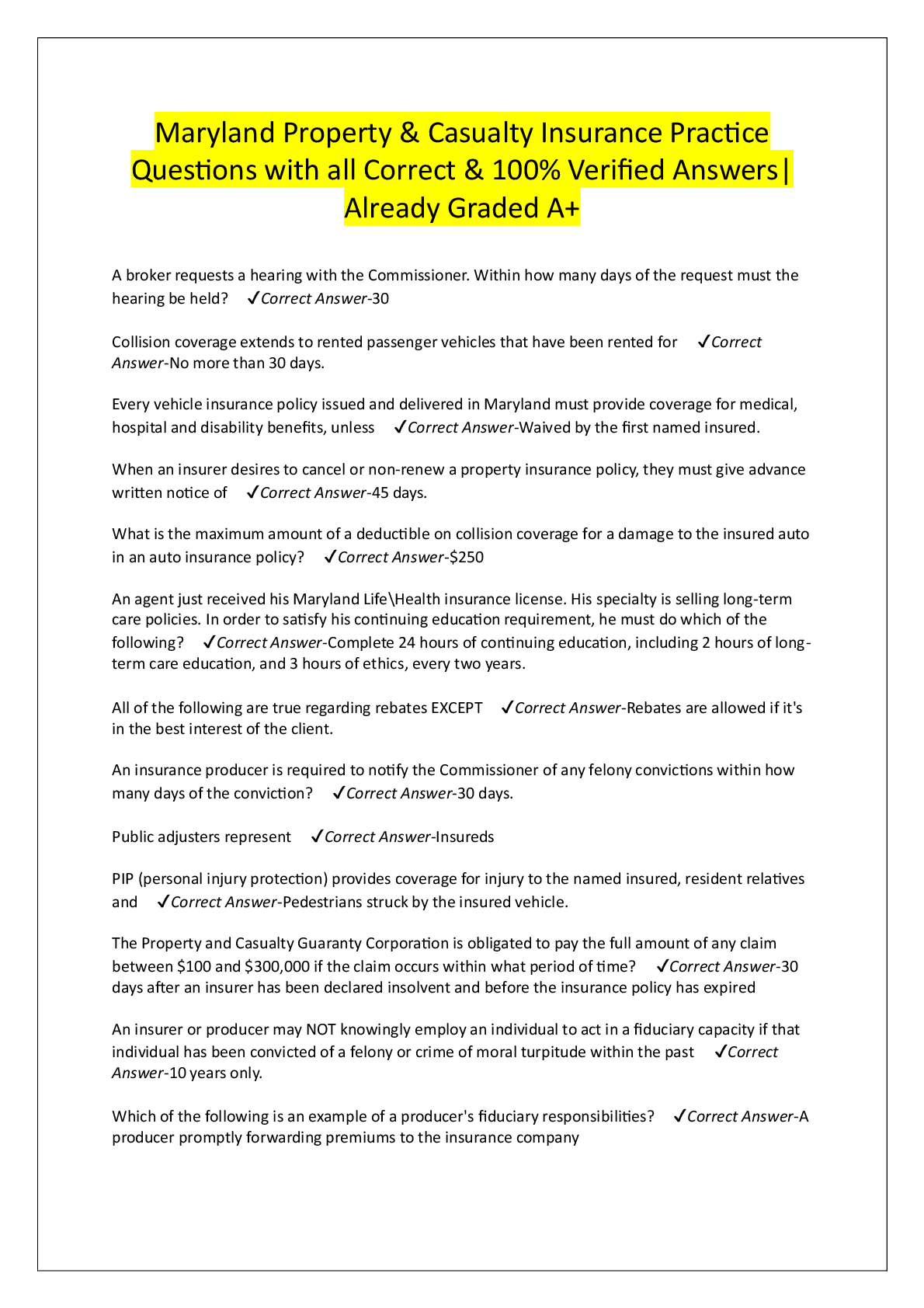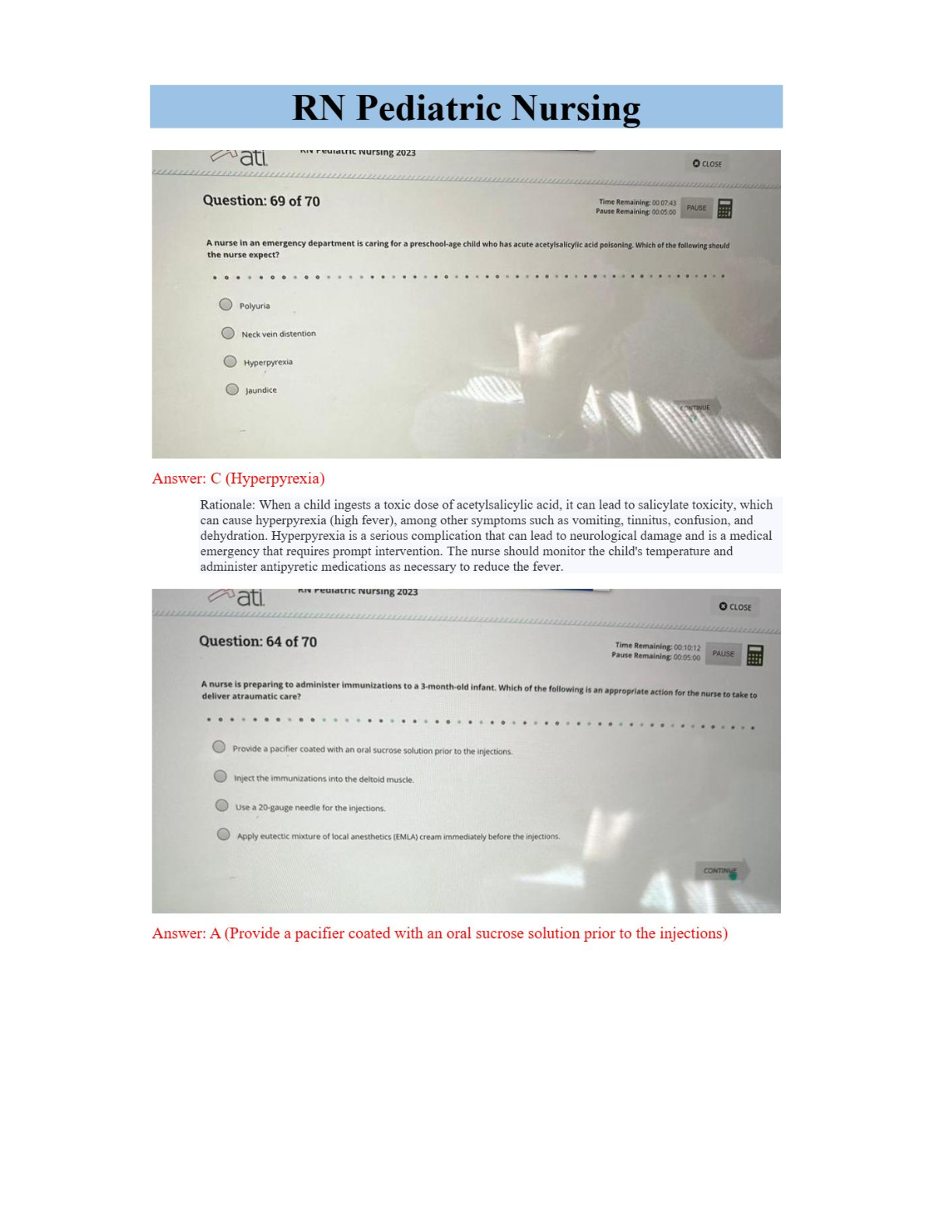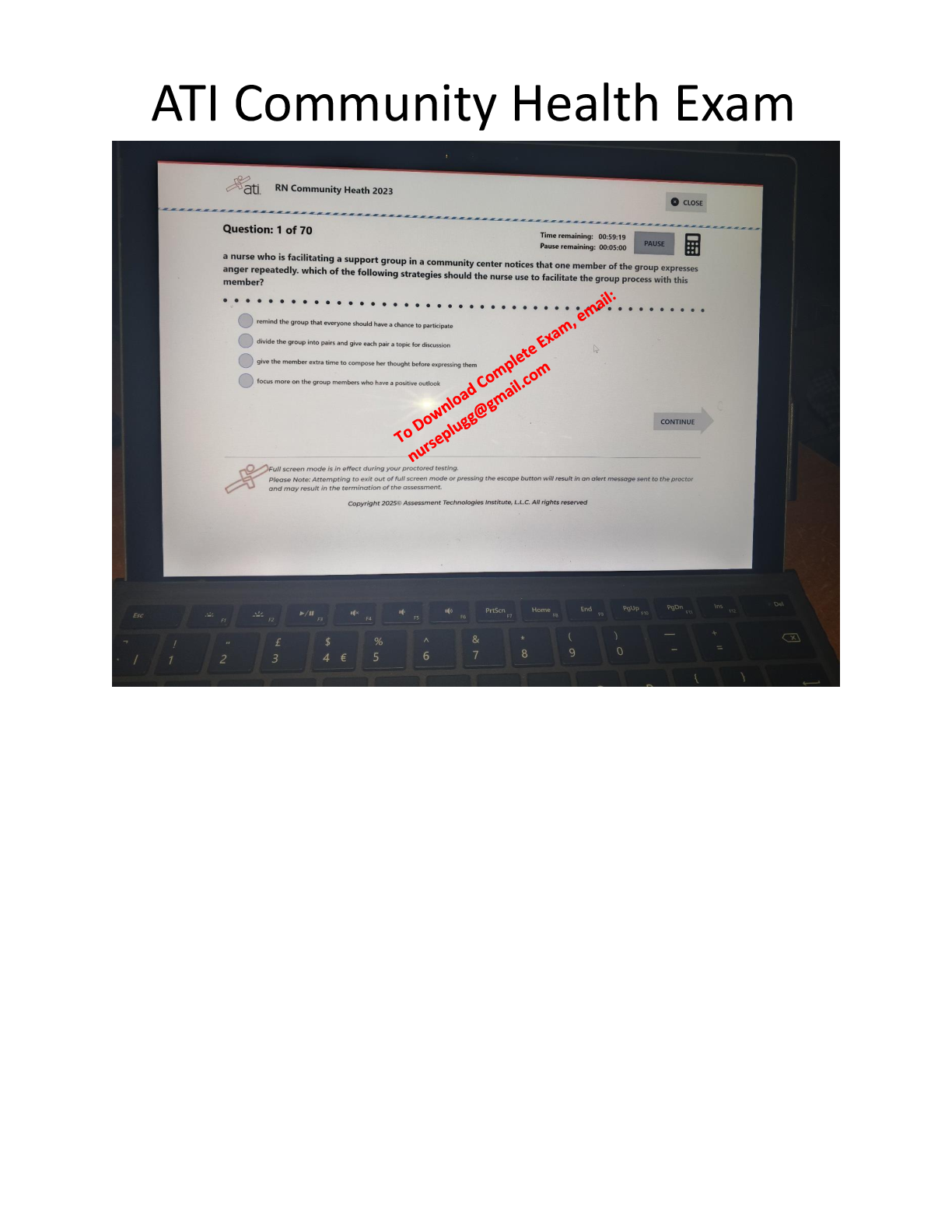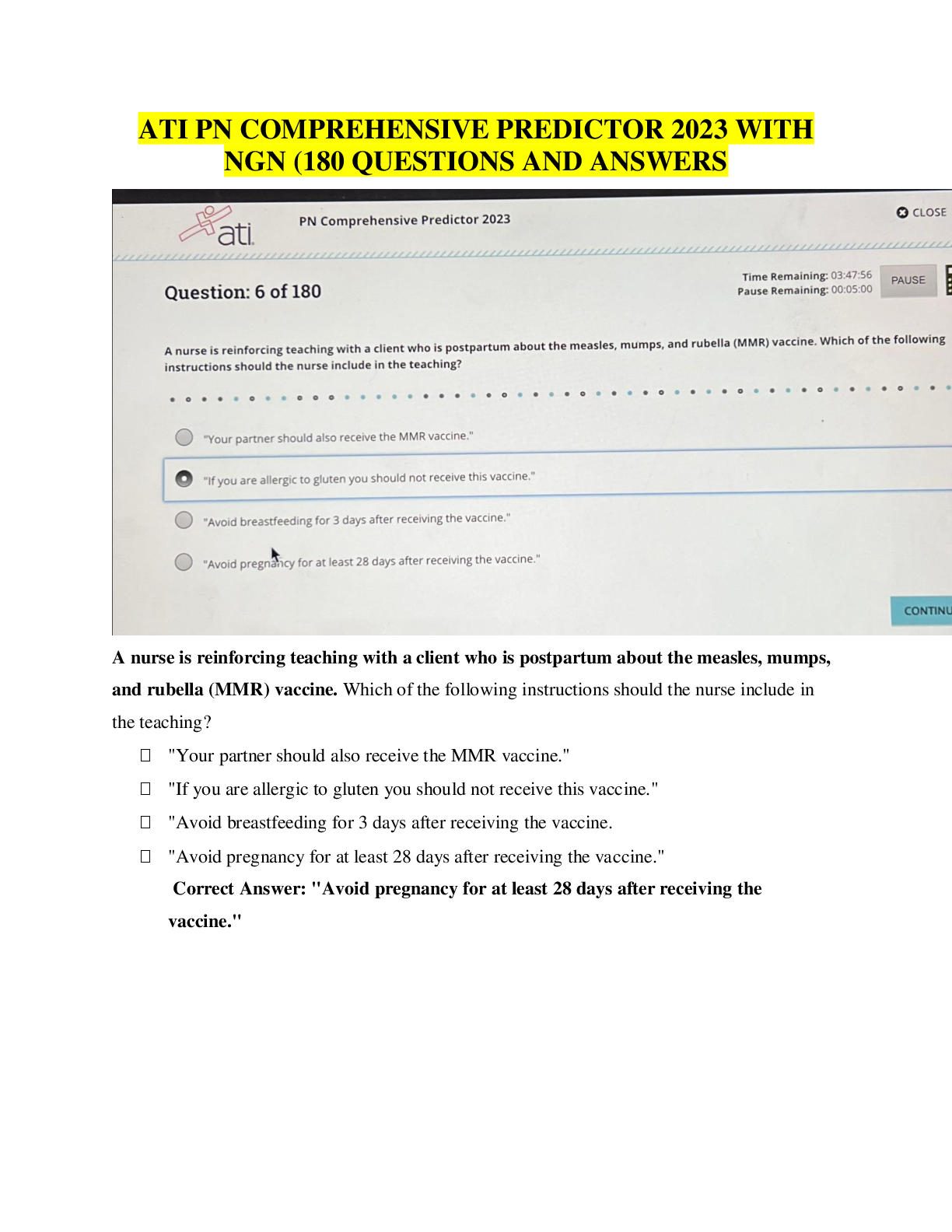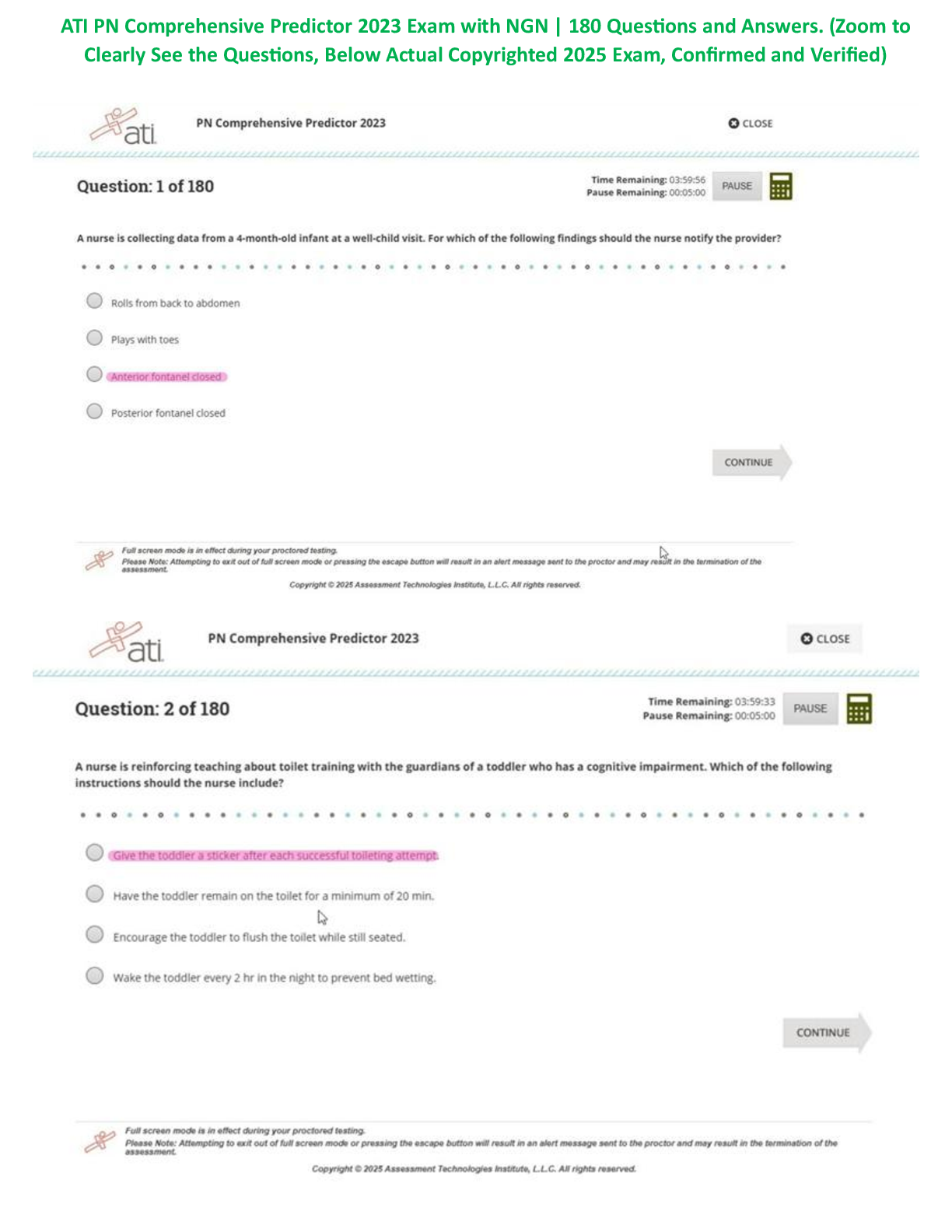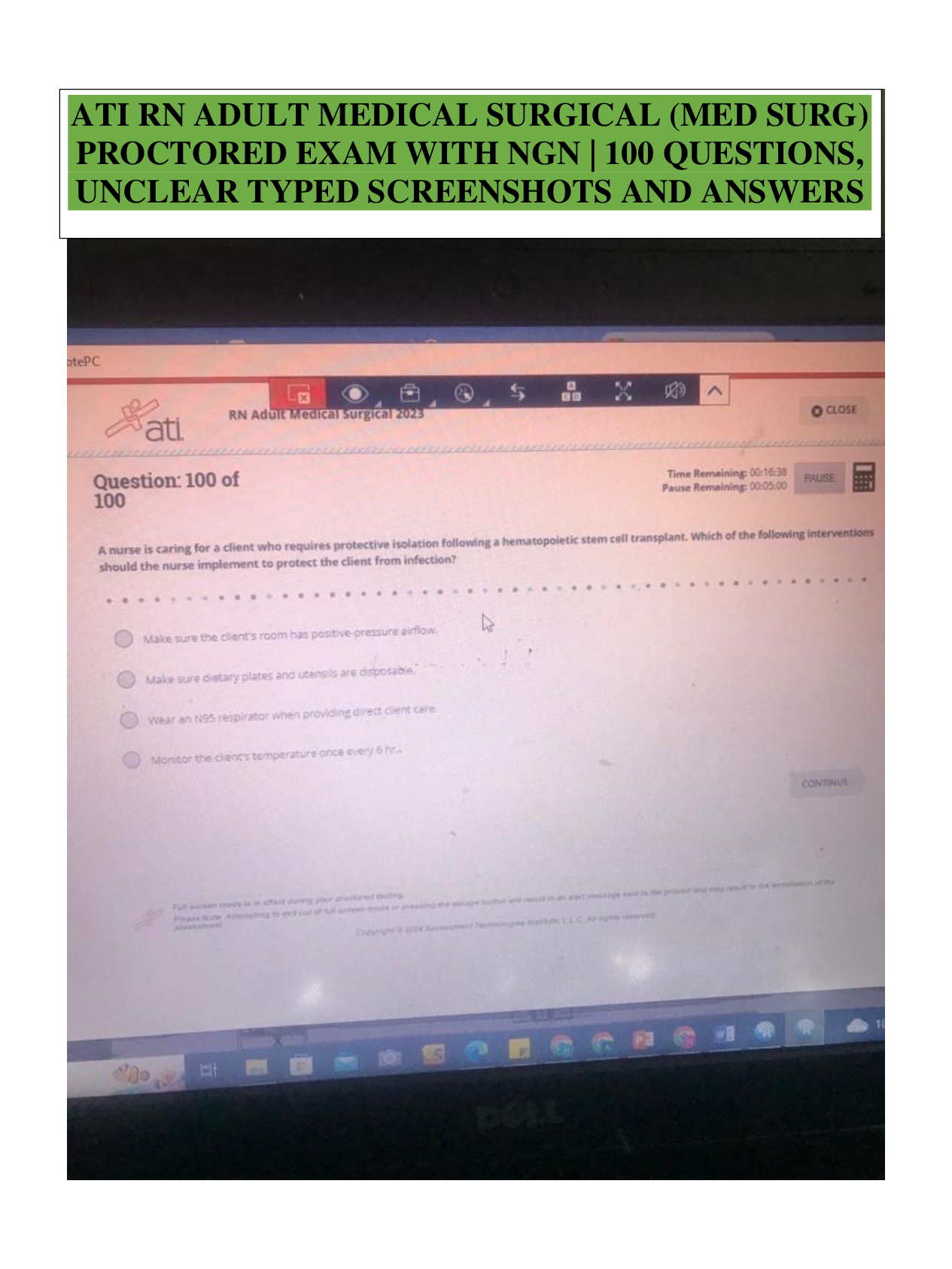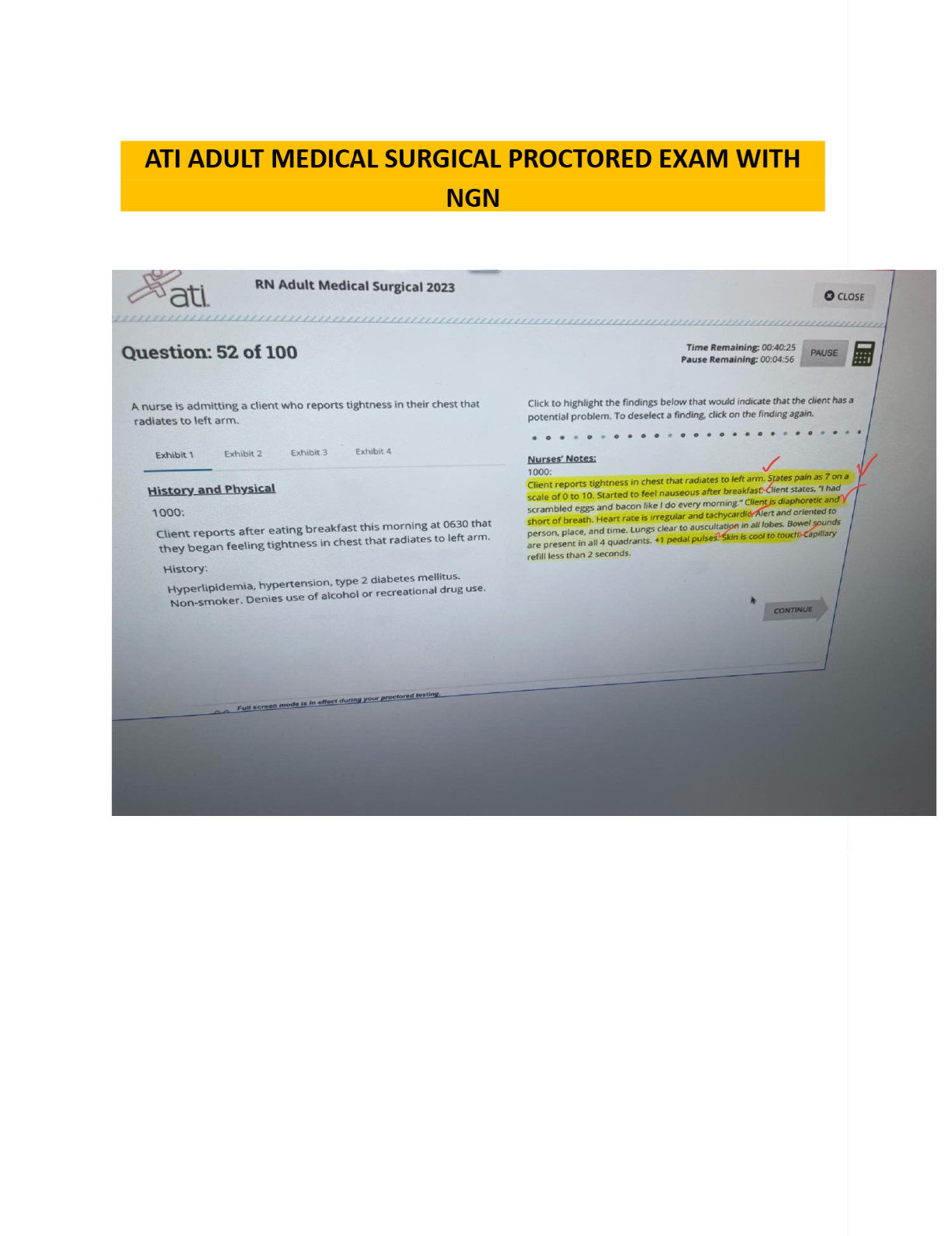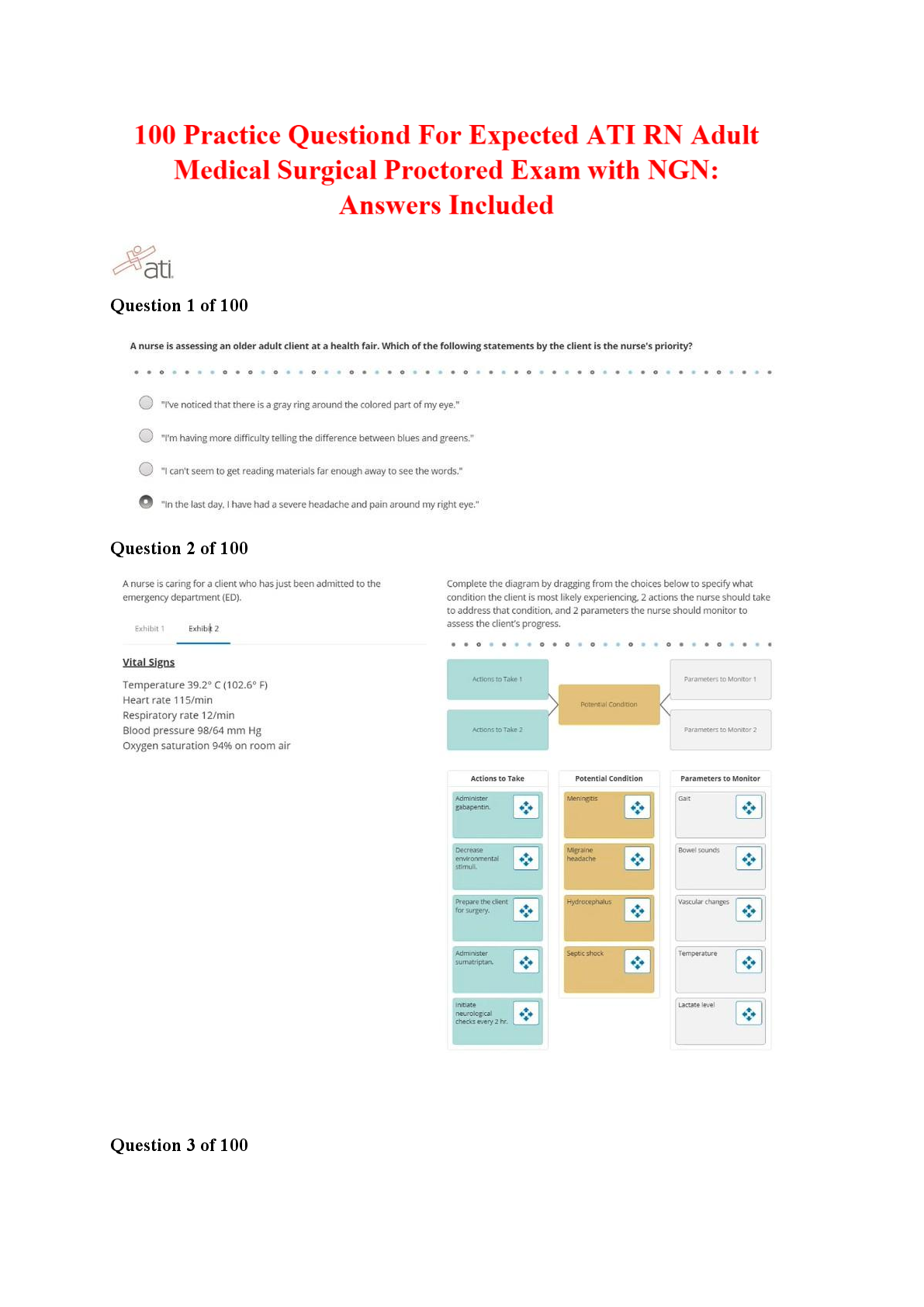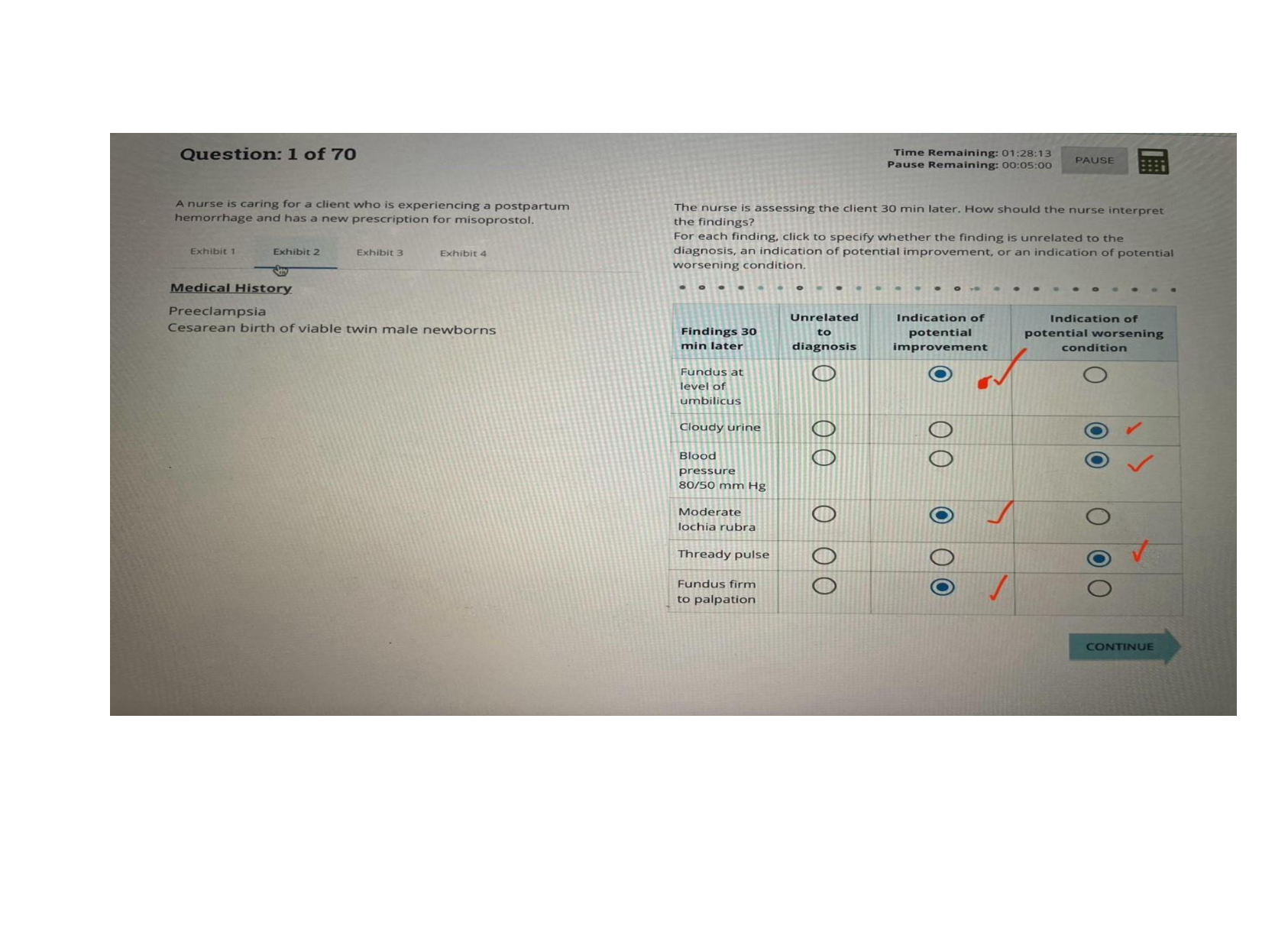HIST 405 week 4 quiz 2 | (Rated A+) Latest 2025/2026 Guide.
Document Content and Description Below
HIST 405 Week 4: Civil War and Reconstruction – Quiz 2 HIST405 week 4 quiz 2 By 1835, Texas was home to about 30,000 American settlers, known as Texans. Tejanos. Mountain Men. forty-niner ... s. Question : (TCO 2) Congress tried to resolve the dispute between the North and the South about slavery in the territories by: repealing the Wilmot Proviso. adopting the Wilmot Proviso. adopting the Compromise of 1850. repealing the Compromise of 1850. Question: (TCO 3 ) How did industrialization affect the relationship of the United States with the world? Other nations asked the U.S. to manage global markets. The U.S. became increasingly involved in other nations’ affairs. Domestic industry led the U.S. to reject international trade. Most other nations quickly adopted political and economic policies modeled after those of the U.S. Question : (TCO 3) How did emigrants traveling west gain security? Federal troops traveled with them. They traveled in groups to help each other. They crossed the land in winter to avoid contact with Indians. Missionaries went ahead of them to convert Indians. Question : (TCO 3) How did northerners respond to the Fugitive Slave Act? Some northern states enacted legislation opposing it Some northern states supported it Some northern states enacted the Wilmot Proviso Some northern states challenged it in the Supreme Court Question: (TCO 2) Immediately prior to “Bleeding Kansas” what kind of government had been established din the Kansas-Nebraska territory? Kansas had an anti-slavery government and Nebraska had a pro-slavery government an anti-slavery government a pro-slavery government Two opposing governments were established in Kansas Question: (TCO 3) In the early 19th century, the largest source of European immigration came from Germany. Poland. England. Ireland. Question : (TCO 3) In the 1800s, people became more interested in religion as a result of: Transcendentalism. Utopianism the rise of factories. the Second Great Awakening. Question: (TCO 3) In 1847, Mormons emigrated to the area between the Rocky Mountains and the Great Salt Lake to escape war with Native Americans escape hostile neighbors establish the territory of Utah establish and cultivate farmland Question: (TCO 2) In the 1848 election, why were Whigs and Democrats forced to take a stand on slavery? The Free-Soil Party’s goal was to keep slavery out of the territories The Free-Soil Party wanted to abolish slavery in the South The Free-Soil Party supported popular sovereignty Popular sovereignty was no longer a viable option Question : (TCO 2) In 1856, Border Ruffians attacked: a New York abolitionist named John Brown. a group of Southern farmers. Senator Charles Sumner. the anti-slavery town of Lawrence, Kansas. Question. (TCO 3) James Polk opposed annexation of Texas. purchased Texas from Mexico. favored annexation of Texas. was the only governor to serve two terms in Texas Question. (TCO 8) Lee’s smaller army defeated McClellan’s larger force and kept Union Troops out of Richmond because Lee was lucky McClellan surrendered Lee found McClellan’s battle plans McClellan was too cautious Question. (TCO 2) Millard Fillmore, the last Whig president, angered the North the South both the North and the South neither the North nor the South Question. (TCO 8) One advantage the South had over the North was hat southerners believed that slavery was not that important one southern could whip 10 Yankees that the North lacked the courage to fight deeply in Lincoln’s ability to avoid war Question. (TCO 8) One advantage the South had over the North was hat southerners believed that slavery was not that important passionately in their cause that the North lacked the courage to fight deeply in Lincoln’s ability to avoid war Question. (TCO 1) Slavery expanded with the growth of freight shipment public education cotton plantations northern industries Question : (TCO 1) Southerners believed that slave labor was superior to the paid labor force in the North because: northern workers were not as skilled as slaves. northern employers had to hire new workers often. Question: (TCO 3) The assertion that states the right to disobey federal law was called filibuster Calhounism anti-Jacksonism. nullification Question: (TCO 1) The bloodiest slave uprising in U.S. history was Nat Henthoff’s Rebellion. The Slave Rebellion of 1831. Nat Turner’s Rebellion. The Market Revolution Question: (TCO 3) The creation of an integrated national economy became know as mercantilism price fixing the rise of factories market revolution Question: (TCO 3) The Corrupt Bargain of 1824 secured the presidency for Andrew Jackson John Quincy Adams Henry Clay William Crawford Question: (TCO 2) The Fugitive Slave Act adopted in 1850 required private citizens to assist with apprehending runaway slaves. required private citizens to help runaway slaves escape. applied only to northern states applied only to southern states Question: (TCO 3) The Waltham System pioneered prison reform. created a factory system concentrating all aspects of cloth production under one roof. made settlements in many areas throughout the U.S. introduced a plan to bring immigrants to the U.S. Question: (TCO 2) What law was found to be unconstitutional in the Dred Scott decision? The personal liberties laws The Wilmon Provision The Missouri Compromise The Kansas-Nebraska Act Question: (TCO 8) Which Civil War battle decisively turned the tide of war in favor of the Union? Battle of Atlanta Battle of Vicksburg Battle of Richmond Battle of Gettysburg Question: (TCO 3) Which groups lived in communal societies? Protestants and Unitarians Catholics and Jews Transcendentalists and Mormons Utopians and the Oneida group Question: (TCO 8) Which of the following characterizes Sherman’s march across Georgia? He took the shortest, narrowest route He only destroyed Confederate military sites He destroyed everything in his path He tried to negotiate with southerners Question: (TCO 3) Which of the following helped James K. Polk win decisive presidential victory? The Mexican War Polk’s vow to obtain both Texas and Oregon Polk’s opposition to manifest destiny The Texan revolt Question. (TCO 3) Who extolled the equality of conditions in his book Democracy in America? Lafayette. Andrew Jackson. de Tocqueville. Thomas Jefferson Question : (TCO 3) Who led the Texans in drawing Santa Anna into a trap at the Battle of Jacinto? Stephen F. Austin Jim Bowie Sam Houston Davy Crockett Question : (TCO 2) Why did John Brown attack the arsenal at Harpers Ferry? He wanted to avenge the death of his sons. He was protesting in favor of slavery. He hoped to inspire a revolution that would end slavery. He wanted to die as a courageous martyr. Question : (TCO 8) Why did Lincoln announce, early in the Civil War, that he would not free enslaved people? He personally supported slavery. He wanted to trick the South into surrendering. He wanted to impress European leaders. He wanted to keep the border states in the Union. Question : (TCO 8) Why did President Lincoln want Grant commanding the Union army after the Battle of Gettysburg? He wanted to give Grant a chance to prove himself. He knew Grant would do anything to win the war. He had heard that Grant had recruited more Union troups. He thought the South would surrender. [Show More]
Last updated: 1 year ago
Preview 1 out of 6 pages

Loading document previews ...
Buy this document to get the full access instantly
Instant Download Access after purchase
Buy NowInstant download
We Accept:

Reviews( 0 )
$8.50
Can't find what you want? Try our AI powered Search
Document information
Connected school, study & course
About the document
Uploaded On
Nov 26, 2019
Number of pages
6
Written in
All
Additional information
This document has been written for:
Uploaded
Nov 26, 2019
Downloads
0
Views
212




